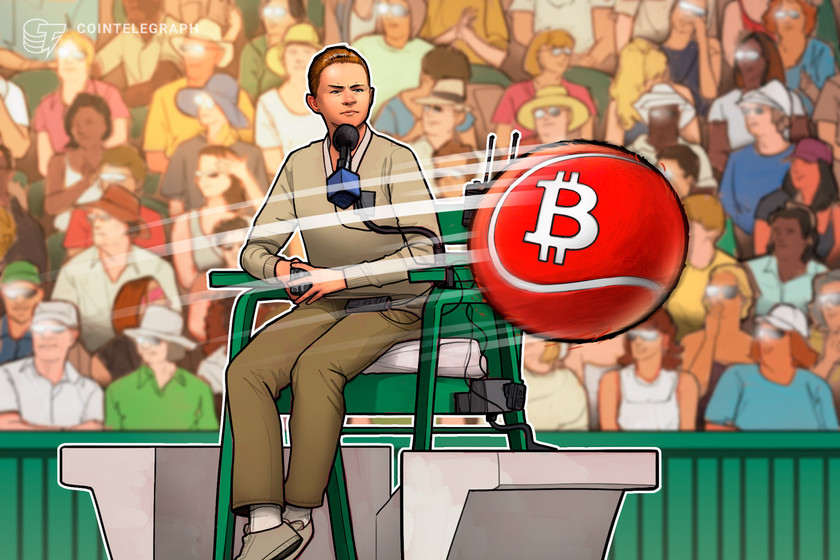Bitcoin rebound to $18.4K? BTC price derivatives show strength at key support zone


Miners are in deep trouble due to increased hash rate and energy costs, but pro traders slightly added to their longs despite the recent BTC pullback.
Bitcoin (BTC) price lost 11.3% between Dec. 14 and Dec. 18 after briefly testing the $18,300 resistance.
The move followed a seven-day correction of 8% in the S&P 500 futures after United States Federal Reserve Chair Jerome Powell issued hawkish statements after raising the interest rate on Dec. 14.
Bitcoin price retreats to channel support
Macroeconomic trends have been the main driver of recent movements. For instance, the latest bounce from the five-week-long ascending channel support at $16,400 has been attributed to the Central Bank of Japan’s efforts to contain inflation.


The Bank of Japan increased the limit on government bond yields on Dec. 20, which are now trading at levels unseen since 2015.
However, not everything has been positive for Bitcoin, as miners have struggled with the hash rate nearing an all-time high and increased energy costs. For example, on Dec. 20, Bitcoin miner Greenidge reached an agreement with its creditor to restructure $74 million worth of debt — although the deal requires the miner to sell nearly 50% of it equipment.
Moreover, publically listed Bitcoin mining company Core Scientific reportedly filed for Chapter 11 bankruptcy on Dec 21. While the company continues to generate positive cash flows, the income is insufficient to cover it operational costs, which involve repaying the lease for its Bitcoin mining equipment.
During these events, Bitcoin has held $16,800, so there are buyers at these levels. But let’s look at crypto derivatives data to understand whether investors have increased their risk appetite for Bitcoin.
Bitcoin futures are back to backwardation
Fixed-month futures contracts usually trade at a slight premium to regular spot markets because sellers demand more money to withhold settlement for longer. Technically known as contango, this situation is not exclusive to crypto assets.
In healthy markets, futures should trade at a 4% to 8% annualized premium, which is enough to compensate for the risks plus the cost of capital.


It becomes clear that the attempts to push the indicator above zero have utterly failed over the past 30 days. The absence of a Bitcoin futures premium indicates higher demand for bearish bets, and the metric worsened from Dec. 14 to Dec. 21.
The current 1.5% discount indicates professional traders’ reluctance to add leveraged long (bull) positions despite being actually paid to do so.
Top traders unwilling to let go of their longs
Still, investors should analyze the long-to-short ratio to exclude externalities that have solely impacted the quarterly contracts’ premium.
The metric gathers data from exchange clients’ positions on spot and perpetual contracts, better informing how professional traders are positioned.


Even though Bitcoin briefly traded below $16,300 on Dec. 19, professional traders did not reduce their leverage long positions according to the long-to-short indicator. For instance, the Huobi traders’ ratio stabilized at 1.01 between Dec. 16 and Dec. 21.
Similarly, OKX displayed a modest increase in its long-to-short ratio, with the indicator moving from 1.02 to the current 1.04 in five days.
Lastly, the metric slightly increased from 1.05 to 1.07 at Binance, confirming that traders did not become bearish after the ascending channel support was tested.
Strength of $16,800 support is a bullish indicator
Traders cannot ascertain that the absence of a futures premium necessarily translates to bearish price expectations. For instance, the lack of confidence in the exchanges could have driven away potential leverage buyers.
Related: Pantera CEO on the FTX collapse; Blockchain didn’t fail
Moreover, the resilience of the top traders’ long-to-short ratio has shown that whales and market makers did not reduce leverage longs despite the recent price dip.
In essence, Bitcoin’s price movement has been surprisingly positive, considering the negative news flow from miners and the bearish influence of raising interest rates on risk markets.
Therefore, as long as the $16,500 channel support continues to hold, bulls have reason to believe that another shot at the $18,400 upper band limit is viable before year-end.
The views, thoughts and opinions expressed here are the authors’ alone and do not necessarily reflect or represent the views and opinions of Cointelegraph.


































